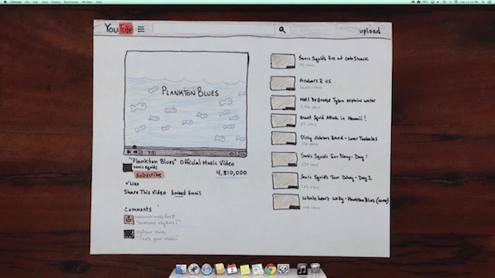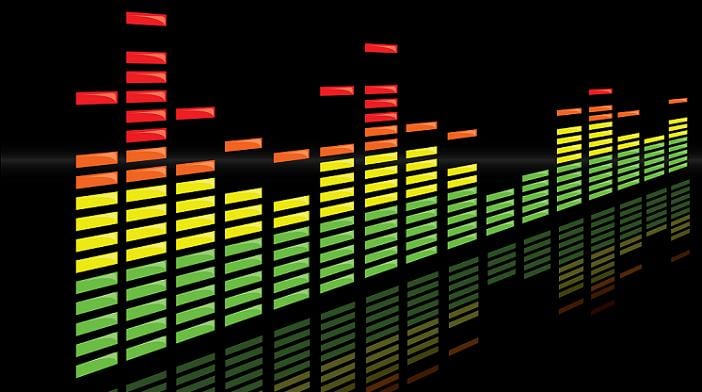 All images via flypaper.soundfly.com
All images via flypaper.soundfly.com
A version of this article originally appeared on Soundfly.
If you’ve spent more than five minutes on any social media, from Facebook to Snapchat, you already know it’s a time suck. Just browsing the feeds can be an hour-long distraction, and when you add in creating content, scheduling updates, interacting with fans, running promotions, and studying your analytics, it’s more like a full-time job.
In fact, it is my full-time job. I’ve spent the past five years traveling around the country teaching artists and creatives how to promote their work on the internet. The sad, slow refrain I hear repeated most by my clients is this: “I know social media is important, but I just don’t know where to start.”
A huge part of that uncertainty stems from the sheer number of social media outlets available. We’re way past just creating a Facebook page for your band (not that that isn’t important!) and posting once a month. Our culture consumes new media at a phenomenal rate, and fans are clamoring for more from their favorite artists. We also have more ways to communicate a story than ever before, whether through a witty 140 characters on Twitter or a behind-the-scenes Snapchat tour of your latest recording session.
It’s a lot of work, but social media marketing can be fun and can get your work the attention it deserves. Here’s a quick, three-step boot camp on finding the right platforms to promote your work!
1. Know your platforms
No two social media platforms are alike. The audience and demographics are different. The tone is different. The type of content shared is different. Each one is a different medium, and therefore the creative process is different for each of them. This means that not all of them are going to be for you.
To learn the ins and outs, you should create an account on each platform. This does the double duty of allowing you to explore, while saving your username if you ever do decide to use it. Look around, and get a sense of how it’s used and who’s posting. See if you can find your tribe, and see if using it gives you ideas for what you might post.
If you come across a platform that feels like a bad fit for your band (and your brand), move on. You may come back and develop it later on, but for now, focus on finding platforms that seem to fit seamlessly into your work and building those followings first.
[4 Social Media Platforms Your Band Might Not Be Using Yet (But Probably Should Be)]
2. Consider the content you're already creating
Are you a bassist with a love of photography? Does your biting wit extend far beyond your song lyrics? Are you a pianist with a natural gift for teaching others how to tickle the keys?
Think about the content surrounding your music that you’re already creating, or that you could easily create without greatly interrupting your process or your schedule. Consider what you’d be posting when you don’t have news about the band, when there are no upcoming album drops or tour dates.
This content should be personal and on brand, meaning you should keep a consistent aesthetic, voice, and tone. You also want to look for content that offers value. How-tos, downloads, exclusive offers, behind-the-scenes content, and humor are examples of value content, though just a few.
Once you’ve made a list of ideas for posts that you might be able to write, compare what you’ve got to offer with what each platform is used to post.
You should have a Facebook fan page. It’s an easy way for people to find you, improves your SEO, and it’s a great platform to share event dates, photos, interviews, reviews, and content created for other platforms. That said, unless you’re seeing a lot of interaction and regular growth on your page, don’t worry about spending too much time working on posts just for Facebook.
Learn more:
- Facebook: 7 Odd Tips And Tricks for Musicians
- The 4 Most Common Mistakes Bands Make With Facebook
- Facebook Tips, Tricks, and Best Practices: 2016 Edition
Brevity is the soul of wit, and wit is the heart of Twitter. This “microblogging” platform gives you just 140 characters to work with per post. If you can make a stranger cackle with a one-liner about your dog, you’ll be in good company. A great fit for writers and conversationalists, this platform will take less of your time planning and developing content and more of your time interacting and live-tweeting your thoughts.
Learn more:
- 9 Strategies Your Band Should Use to Gain (And Keep) Twitter Followers
- How to Tell if Your Band's Tweets Are Actually Getting Seen by Anyone
- Musicians: 5 Mistakes You Might Be Making on Twitter
Does your band stage an impromptu photo shoot every time you’re in the same room? If photography, illustration, painting, or any other visual arts are your second passion, Instagram is the right fit for you. This platform allows you to post photos and videos for your followers, and uses hashtags and geotags to aid in search results.
Aim towards establishing a “visual brand” on your Instagram account – you want a page of all your posts to look as appealing as the individual posts themselves. For a breakdown of building a following, check out “The Fundamental Musician’s Guide to Instagram for Bands.”
Learn more:
- 4 Ways for Artists to Take Advantage of Instagram's New 60-Second Videos
- 25 Ways to Get More Fans for Your Band Using Instagram
Pinterest users are in the market to learn, and they also happen to spend more than users on any other social media site. Another highly visual platform, this one is less about selfies and more about recipes and DIYs. The site is best used when your pins are driving traffic to a blog, website, video, or product, so this platform does take a little more planning than many of the others. If you’ve got a great eye for images, a bit of a craftsy side, and a need to share your skills, this one is for you.
Learn more:
Snapchat
Snapchat is the down and dirty of social media marketing – perfect for bands who love to share but don’t have the time to schedule and plan picture-perfect content. With Snapchat, you can take photos and record short videos to share with your followers or send directly to your friends, and those videos are gone within hours. If you hate the idea of scheduling a photo shoot but love the idea of taking your fans backstage and on the tour bus, Snapchat is a great option.
Learn more:
- The Musician's Guide to Snapchat
- Snap Your Friends, Snap Your Fans: How to Make the Most of Snapchat as an Artist
- 4 Ways Artists Can Use the Newly Updated Snapchat to Their Advantage
Tumblr
I mention Tumblr specifically because of the large user base and easy blogging tools, but there are plenty of excellent options. A blog requires less frequent updates and is best used when planned in advance and coupled with an email list. Post your tour photos, wax poetic about your latest gig, or share your songwriting process. Your blog is a great place for you to unleash your inner writer and open up to your fans about what’s going on when the lights are down.
Learn more:
YouTube
This all-knowing video machine is an oldie and goodie in the social media world, and new artists are developing followings on the platform every day. Planning, filming, editing, and uploading videos will take longer than on Snapchat or Vine, but if you get enough views, YouTube will pay you for them. Recording studios, behind-the-scenes videos, and concerts are all good bets for the platform, and if you get creative with vlogs and humor videos, you can set yourself apart.
Learn more:
- How to Write the Optimal Description for Your YouTube Video
- How to Create a YouTube Strategy Without Official Music Videos
- 5 Reasons Why People Aren't Watching Your YouTube Videos
Periscope
A huge new live-stream tool, Periscope allows you to broadcast live or tune into followers and posters around the globe. Videos range from webinars and tutorials to live concerts to rants and raves, and viewers can type in their comments and questions. If you’ve got an extra set of hands (or a tripod) at your next rehearsal, consider filming a few minutes to tease your fans with your next release.
Learn more:
There are so many other options available, including Peach, Vine, Reddit, and Patreon, so don’t despair if none of the above are sounding like the one for you!
3. Discover your audience
Find out where your audience lives and what they love. You may already have a general sense of what your audience is doing on the internet, but take a few minutes to sit down and do some research. Write down what you know about the kind of people who come to your shows, support your work, and rock out to your music. How old are they? What do they like? Where do they live?
Now think about where someone like that would hang out on the internet. What would they share? Where would they want to go to follow you and what would they hope to see you post? How do you want to appear to them?

Take notes, and when you’re creating and posting content, keep those notes in mind. Once a month, go through your social media profiles and take note of which posts got a bunch of likes and comments and which posts were ignored (or break the work up into smaller bits to add to your daily routine). Analytics are constructive criticism: pay attention to them, adjust your plans accordingly, and you’ll see the results. If you’re not sure where to begin, Hootsuite has a great guide for using Google Analytics.
Remember: Sharing and interacting with your fans is going to be different for each band and fanbase, so the best way to figure out what works is to get out there and start posting. Good luck!
Jessica Hackett is a writer, marketing consultant, and content strategist who helps artists and creatives find their voice on the internet. When she's not drafting campaigns with clients, leading workshops, or scribbling ideas onto the backs of old receipts, she's hiking around America and eating burgers. A former fifth-grade clarinet star and reformed college musical theater diva, her tastes have evolved to include exclusively sad, strange female vocalists and Missy Elliott.







